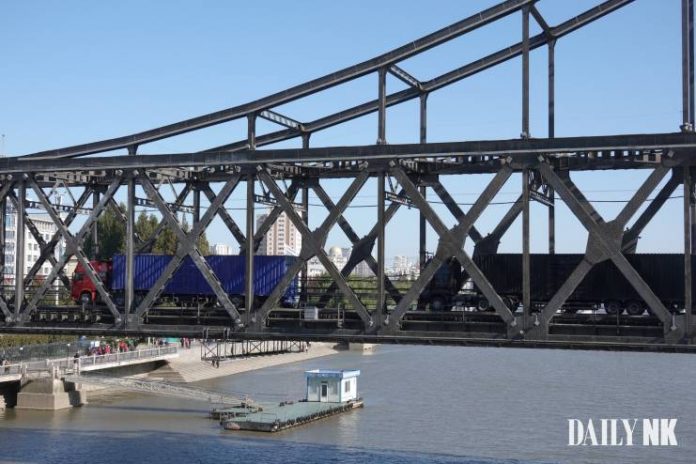
North Korea’s KPW-USD exchange rate has slightly fallen even as the country’s trade volume continues to grow. Meanwhile, the yuan is holding steady amid continued smuggling in North Korea’s border regions.
According to Daily NK’s regular survey of market prices in North Korea, the dollar was trading at KPW 8,010 in Pyongyang as of Apr. 16, the day after the Day of the Sun, the Apr. 15 holiday marking the birthday of North Korea’s late founder Kim Il Sung. This was 2.4% lower than two weeks ago on Apr. 3, when it was trading at KPW 8,210.
Similar falls were seen in Sinuiju and Hyesan as well. The dollar was trading at KPW 8,020 in Sinuiju on Apr. 16, 2.7% less than it was trading on Apr. 3.
The recent fall in the KPW-USD exchange rate in North Korea appears connected with the govenrment’s tendency to concentrate its trade-related orders and tasks on the period just prior to the Day of the Sun.
Given these circumstances, demand for foreign currency to purchase holiday gifts generally grows from the start of the year to early April, but then falls slightly after the holiday.
The recent weakening of the dollar in international exchange markets appears to have impacted North Korea’s exchange rates as well.
The US Dollar Index (DXY), which indicates the value of the dollar against six major global currencies, was 101.203 as of Apr. 16, down 2.4% from Mar. 5, when it was 104.521093.
On the other hand, the yuan is trading at roughly the same rate that it was earlier this month prior to the Day of the Sun.
The yuan was trading at KPW 1,200 in Pyongyang as of Apr. 16, up KPW 20 from Apr. 3, when it was trading at KPW 1,180.
In Sinuiju and Hyesan as well, the yuan was trading at just KPW 10 or 20 higher or lower than it was two weeks ago.
Trading companies that engage in official trade with permission by the North Korean authorities usually conduct their transactions in dollars, but unofficial trading in border regions like North Pyongan Province, Yanggang Province and North Hamgyong Province is conducted in yuan through Chinese traders. As a result, trade-related orders from the North Korean authorities have little impact on yuan exchange rate.
SMUGGLING ON THE RISE
According to multiple reporting partners in North Korea, smuggling has recently been on the rise as patrols in regions along the China-North Korea border have slackened. Smuggled items are also growing more varied and include medicinal herbs, coal, aluminum, copper, goats, sheep and rabbits.
Relatedly, trade volume between North Korea and China in the first quarter of this year approached pre-COVID levels. According to China Customs on Apr. 18, North Korea-China trade recorded USD 158.46 million in March, a 161% increase from a year ago.
Total trade from January to March was USD 485.85 million, 147% more than the previous year, and 95% of what it was in 2019 prior to the COVID-19 pandemic.
Recently, trading companies operating in Liaoning Province received “river crossing passes” from China Customs to use overland routes to North Korea. This development has led to rumors that cargo truck traffic between the Chinese city of Dandong and the North Korean city of Sinuiju will soon restart.
If cargo truck traffic restarts, not only will the trade volume between North Korea and China increase, but unofficial trade along the border will likely grow as well.
Translated by David Black. Edited by Robert Lauler.
Daily NK works with a network of reporting partners who live inside North Korea and China. Their identities remain anonymous due to security concerns. More information about Daily NK’s reporting partner network and information gathering activities can be found on our FAQ page here.
Please direct any comments or questions about this article to dailynkenglish@uni-media.net.


















